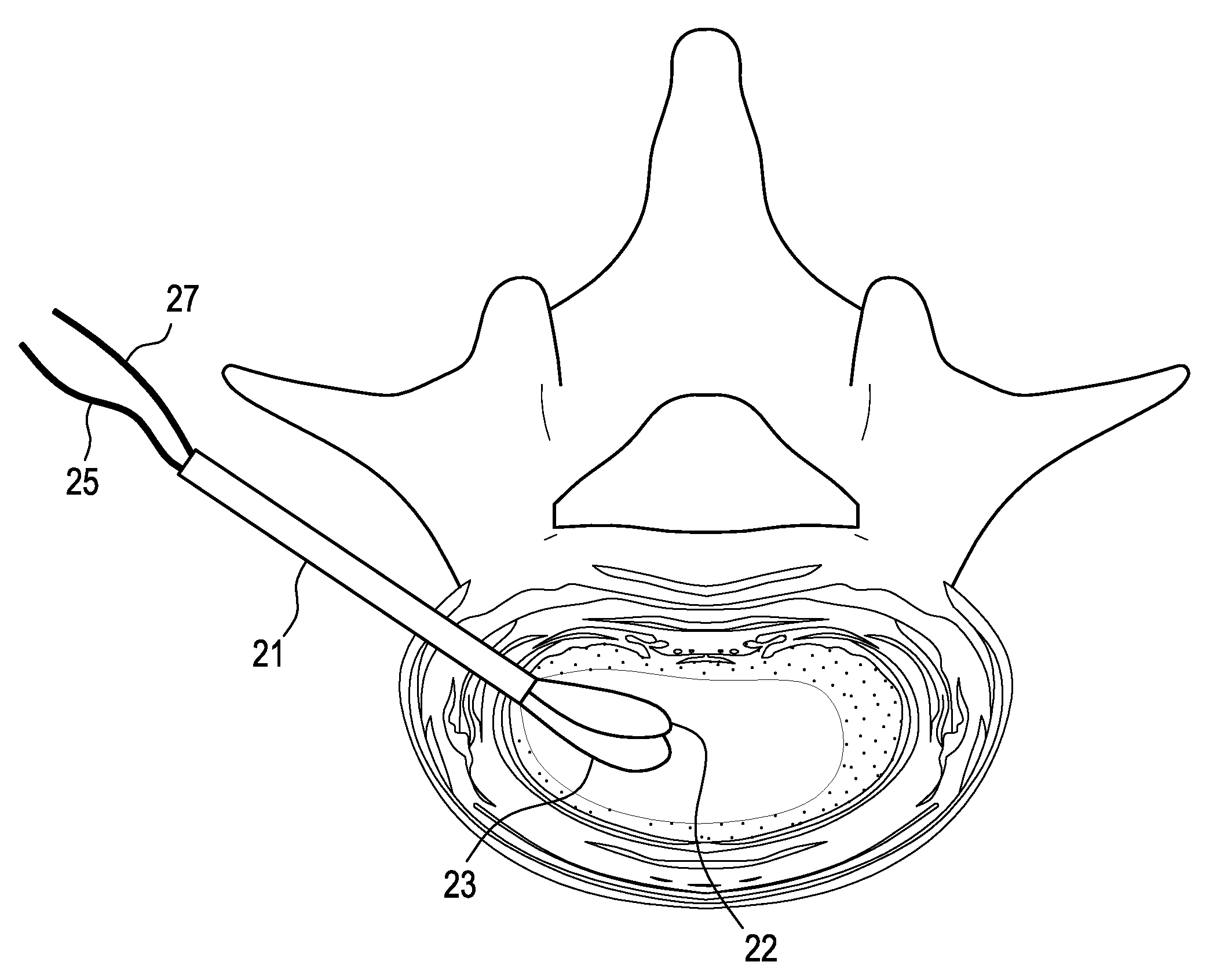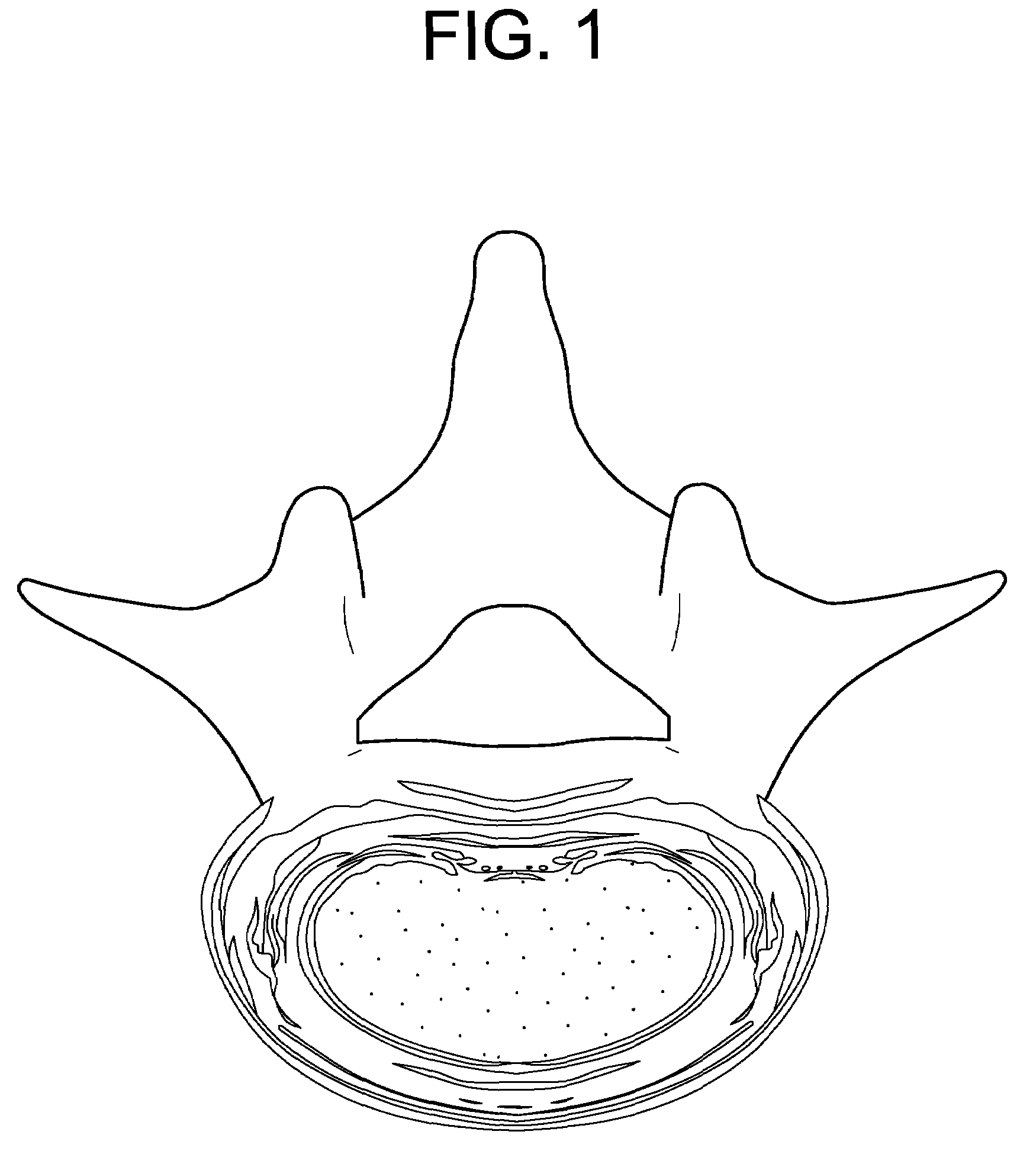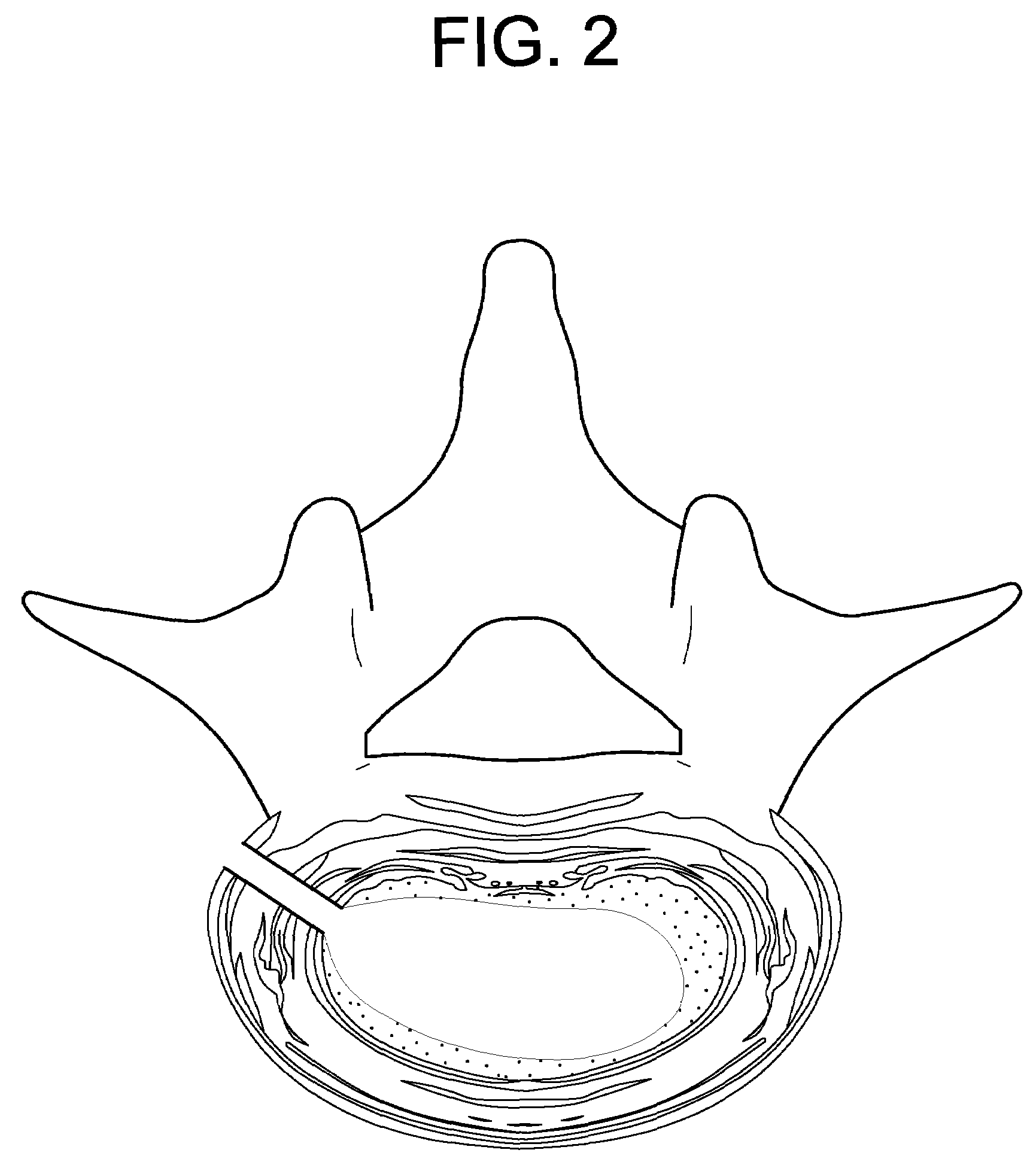Nucleus replacement device and method
a technology of nucleus and replacement device, which is applied in the field of nucleus replacement device and method, can solve the problems of high toxicity of cytokines and mmps, retarding the flow of nutrients into the disc, and accumulating high levels of toxins
- Summary
- Abstract
- Description
- Claims
- Application Information
AI Technical Summary
Benefits of technology
Problems solved by technology
Method used
Image
Examples
Embodiment Construction
[0072]For the purposes of the present invention, a “discectomy” involves the removal of at least a portion of the nucleus pulposus of a degenerated disc. Often, the entire nucleus pulposus is removed. Frequently, a small amount of tissue from the annulus fibrosus portion of the intervertebral disc is removed as well, thereby leaving a central disc space surrounded by the remaining portion of the annulus fibrosus.
[0073]FIG. 1 discloses a cross section of a damaged intervertebral disc.
[0074]In performing a preferred method of the present invention, first, a discectomy is performed by creating a hole in the annulus fibrosus of the degenerating disc, inserting a tissue removal instrument (such as rongeurs) into the hole, and removing nucleus pulposus tissue from the central portion of the disc. The resulting structure is that shown in FIG. 2, wherein a portion of the nucleus pulposus is removed. Now referring to FIG. 3, a cannula 1 is inserted into the hole in the annulus fibrosus.
[0075...
PUM
| Property | Measurement | Unit |
|---|---|---|
| angle | aaaaa | aaaaa |
| angle | aaaaa | aaaaa |
| angle | aaaaa | aaaaa |
Abstract
Description
Claims
Application Information
 Login to View More
Login to View More - R&D
- Intellectual Property
- Life Sciences
- Materials
- Tech Scout
- Unparalleled Data Quality
- Higher Quality Content
- 60% Fewer Hallucinations
Browse by: Latest US Patents, China's latest patents, Technical Efficacy Thesaurus, Application Domain, Technology Topic, Popular Technical Reports.
© 2025 PatSnap. All rights reserved.Legal|Privacy policy|Modern Slavery Act Transparency Statement|Sitemap|About US| Contact US: help@patsnap.com



